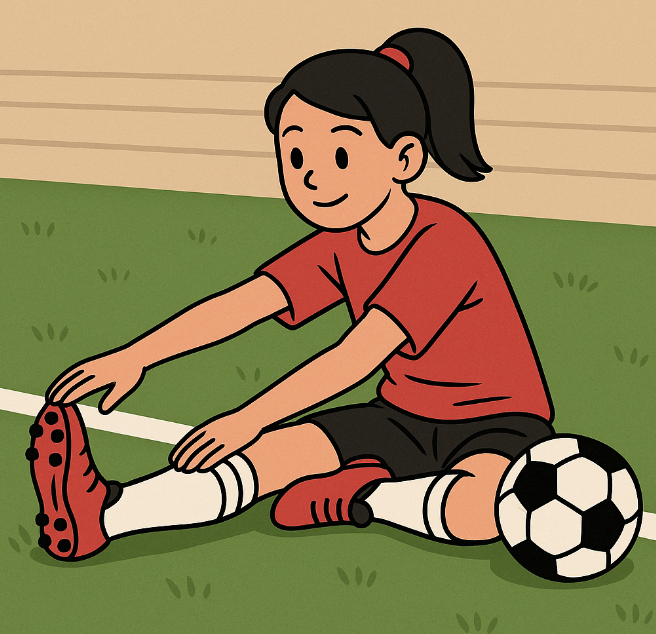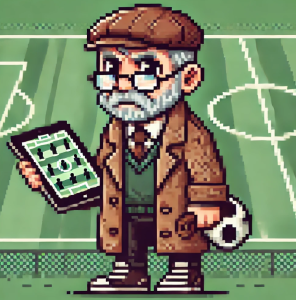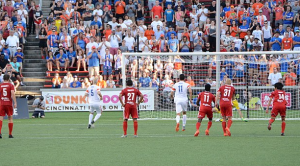
Growing Pains on the Pitch: Preventing Overuse Injuries in Youth Soccer
If you’ve coached or played youth soccer, you’ve seen it: a talented player sidelined not by a big collision or awkward fall, but by a nagging pain in the knee, heel, or groin that just won’t go away. These aren’t freak accidents—they’re overuse injuries, and new research warns they’re one of the biggest threats to the health and development of adolescent players
Up to half of young soccer players will experience an overuse injury in a single season. Unlike a sprained ankle or broken bone, these injuries creep in slowly and often strike during the most important years of growth and development. The good news? Coaches, clubs, and families can take concrete steps to keep kids healthy while still developing their skills.
What the Science Tells Us
A recent review in the International Journal of Environmental Research and Public Health pulls together findings from 27 studies on adolescent soccer injuries. Here are the key takeaways:
- Growth spurts are the danger zone. The period around peak height velocity (PHV)—around 11.5 years for girls and 13.5 for boys—is the single biggest risk factor. During these rapid growth phases, bones lengthen faster than muscles and tendons adapt, leaving tissues more vulnerable to stress.
- Common injury sites: Knees, ankles, hamstrings, and groins take the biggest hit. Conditions like patellar tendinopathy (“jumper’s knee”) and Sever’s disease (heel pain from growth plate stress) are frequent culprits.
- Specialization adds stress. Players who focus on soccer year-round or spend far more time in structured training than in unstructured free play face higher injury risk.
- Training load matters. High-intensity schedules, multiple teams, and limited recovery time create the perfect storm for overuse.
In short: the combination of rapid growth, repetitive soccer movements, and poorly balanced training loads can push young bodies past their limits.
Practical Strategies for Coaches and Clubs
The research didn’t just point out the risks—it also highlighted solutions. Here are actionable takeaways you can use right away:
1. Monitor Growth and Adjust Loads
- Track player height regularly—sudden spikes mean they’re in the PHV zone.
- During these periods, consider reducing match load and focusing on skill work, technical drills, and lower-impact conditioning.
2. Balance Organized Play with Free Play
- Encourage kids to kick the ball around in the backyard or play different sports in the off-season.
- Studies show players who mix in free play have lower overuse injury ratesijerph-22-01388.
3. Strengthen Core and Balance
- Warm-ups that include trunk stabilization (core exercises) cut injury rates nearly in half.
- Plyometric training—short bursts of jump and landing drills—done twice a week improves not just injury resistance but also sprinting, jumping, and kicking power.
4. Prioritize Recovery
- Build in at least 72 hours between high-intensity plyometric sessions.
- After tournaments or congested match schedules, track signs of fatigue and muscle weakness (such as reduced adductor squeeze strength, which links to groin pain).
5. Rethink Specialization
- Delaying single-sport specialization until after age 12 may reduce injury risk and improve long-term player development. Let’s emphasize that more. Delay single-sport specialization.
- Players who participate in other sports often build broader athletic foundations that protect against repetitive strain.
Why This Matters for Soccer Development
Injuries don’t just keep kids off the field—they can derail development, reduce confidence, and even push players out of the sport entirely. By managing loads, embracing variety in play, and focusing on prevention, clubs can:
- Protect player health. Fewer injuries mean less lost time and better long-term physical development.
- Boost performance. Plyometric and neuromuscular training enhance agility, power, and speed alongside reducing injury risk.
- Build resilient clubs. Healthy players mean stronger teams, lower turnover, and a culture that values player well-being.
The science is clear: prevention works. What’s missing is consistent adoption of these strategies across youth clubs.
Your Turn to Kick It Off
Every coach, parent, and player has a role to play in reducing overuse injuries in youth soccer. Here are some questions to reflect on:
- How does your team currently monitor growth and training loads?
- Could your club add core stability or plyometric exercises into warm-ups?
- What balance do your players have between structured training and free play?
Share your thoughts below or on social media—together, we can make soccer safer and more enjoyable for the next generation of players.



